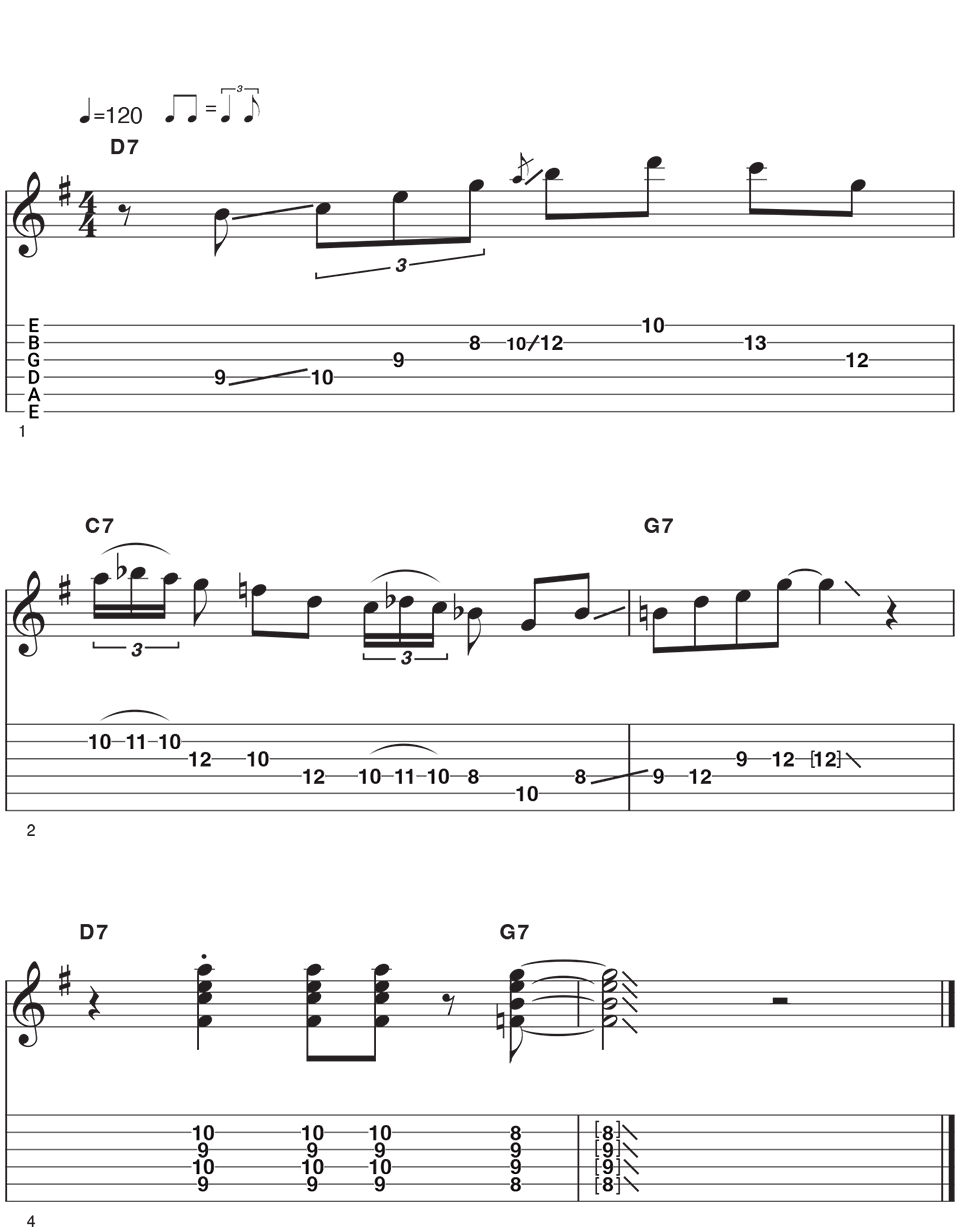Vintage blues is all about character and personality. The great guitarists from the 1930s onwards were truly laying the foundation for the blues-infused guitar music we all love now. Each player had their own clear identity and unique ways of approaching a solo. Personally, I’ve always been drawn to guitarists with character and culture in their playing; players that you can recognize from a mile away when you hear them.
Blues is a feeling, a language, a voice that evolved through the beautiful blending of musical cultures. African American spirituals and work songs infused with elements of European folk music… and this approach of blending musical ideas is extremely apt when it comes to the hallmarks of the vintage blues sound: blues and jazz colliding in the coolest ways you’ve ever heard!
The six players that we’ll be taking a closer look at really knew how to harness the raw expression of pentatonic scales and juxtapose it with the smoother, more sophisticated note choices associated with jazz music. Each of our six example licks will feature this balance of yin and yang musical moods.
The major and minor pentatonic scales lay the foundation, and with some harmonic awareness (knowing which chord you're playing over at any given time), we can add particular chord tones, extensions and flavorful notes to give your playing intent and melodic focus. Outlining the changes like this not only gives solos a more song-like structure, but is an easy way of sounding more jazzy.
All the following six examples are based in the key of G major so let's go!
Charlie Christian

Charlie Christian was a true pioneer of the swinging pre-bop era (approximately 1930-1945), and what he did to solidify the electric guitar’s place in the jazz world was immeasurable. Only 25 years old when he tragically passed, his playing was full of essential hot jazz vocabulary and maturity. His phrasing had an unstoppable momentum with boatloads of swing and groove, and his tone was bold, confident and strong, often sounding more like a horn player than a guitarist.
Charlie always knew how to clearly outline the changes. He had a handful of simple, commonly used shapes that he would favor, and he would decorate these shapes with extensions such as the 6, b7, 9 and even the b3 courtesy of the minor pentatonic scale.
Liberal use of chromatic passing notes and enclosing the major 3rd (ie playing notes either side of it) will get you a long way as you play through the changes for the opening 8 bars of a 12 bar blues in G. Notice the tasty Cm6 chord in bar 6 – this is something discussed in the video portion of this lesson.
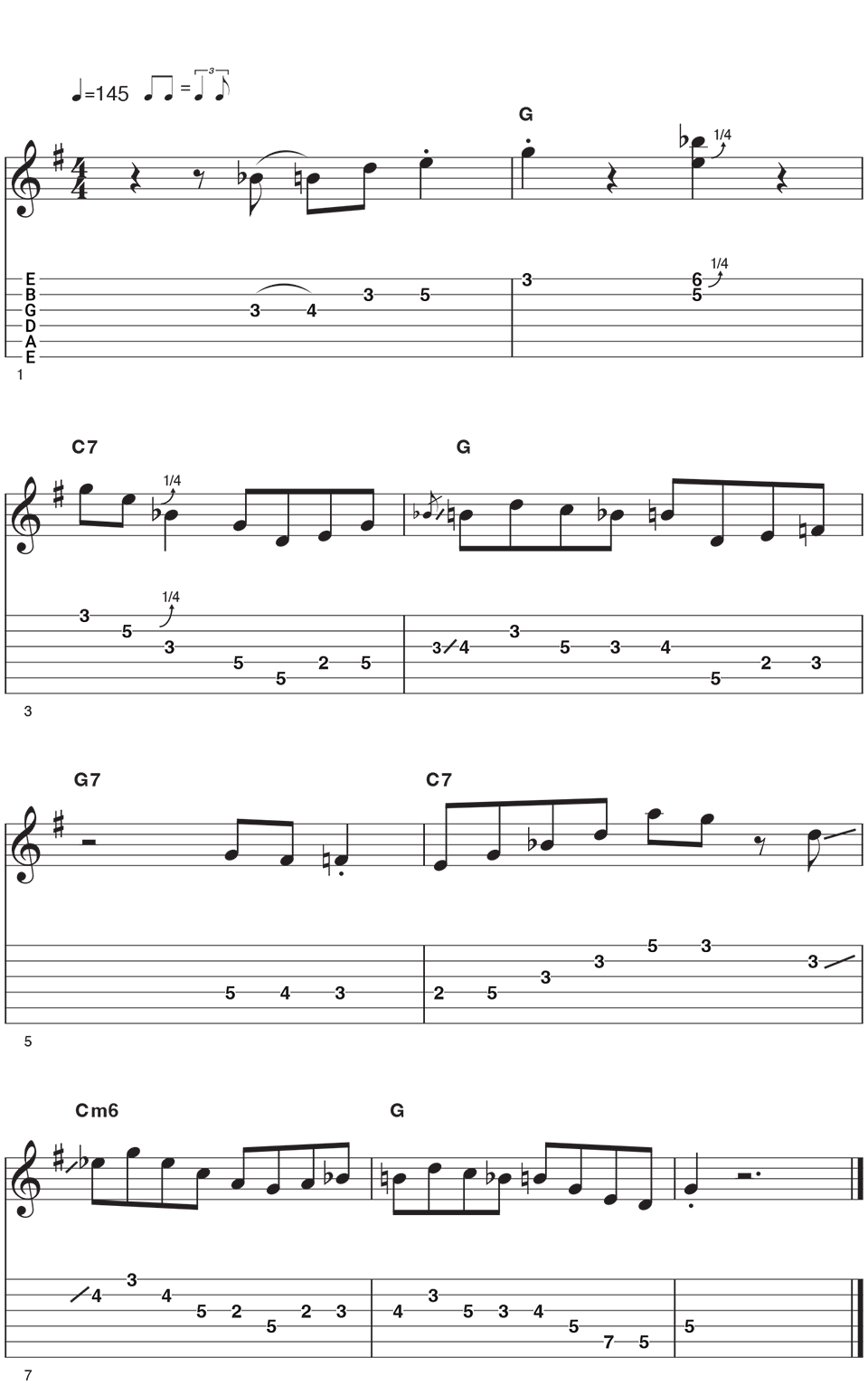
T-Bone Walker
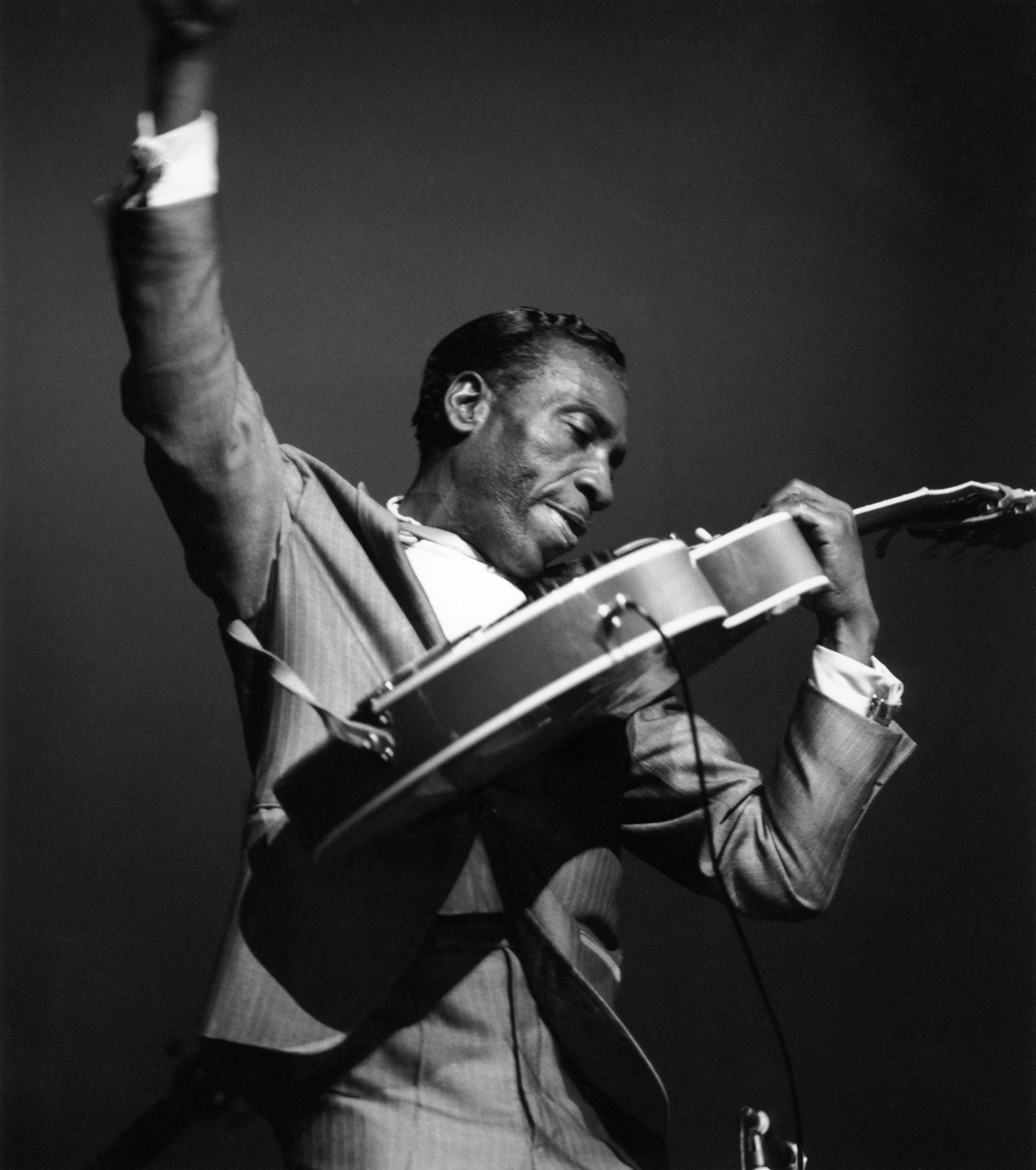
T-Bone Walker had style, showmanship and energy in his back pocket. His licks could be down and dirty, or poetic little clusters of jazz sophistication. His biting, twangy and overdriven tone was truly unique in a time where guitar players were generally after fatter, warmer sounds.
T-Bone was all about vibe, spontaneity and a truly distinct phrasing style and tone. For the following example, you'll stick mostly with the G minor blues scale (G Bb C Db D F – G minor pentatonic with the addition of the b5). Finishing on G major's major 3rd, the B note provides insightful harmonic savvy.
For that biting T-Bone tone pick right next to the bridge. And make sure to under-do your string bends for authenticity: remember, these guys used heavy flat wound strings, no gauge 0.08 or 0.09 string sets favoured back then!
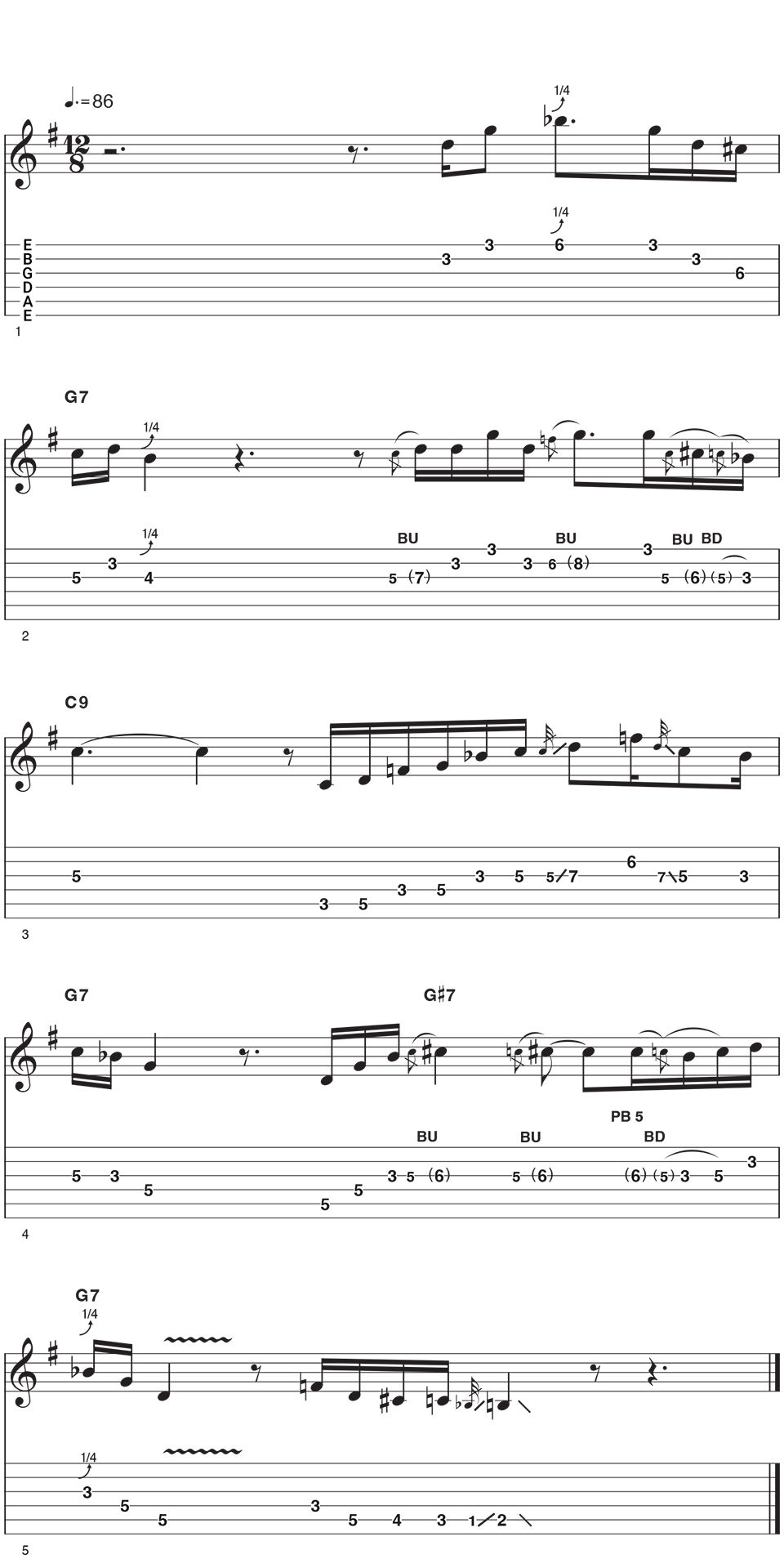
B.B. King
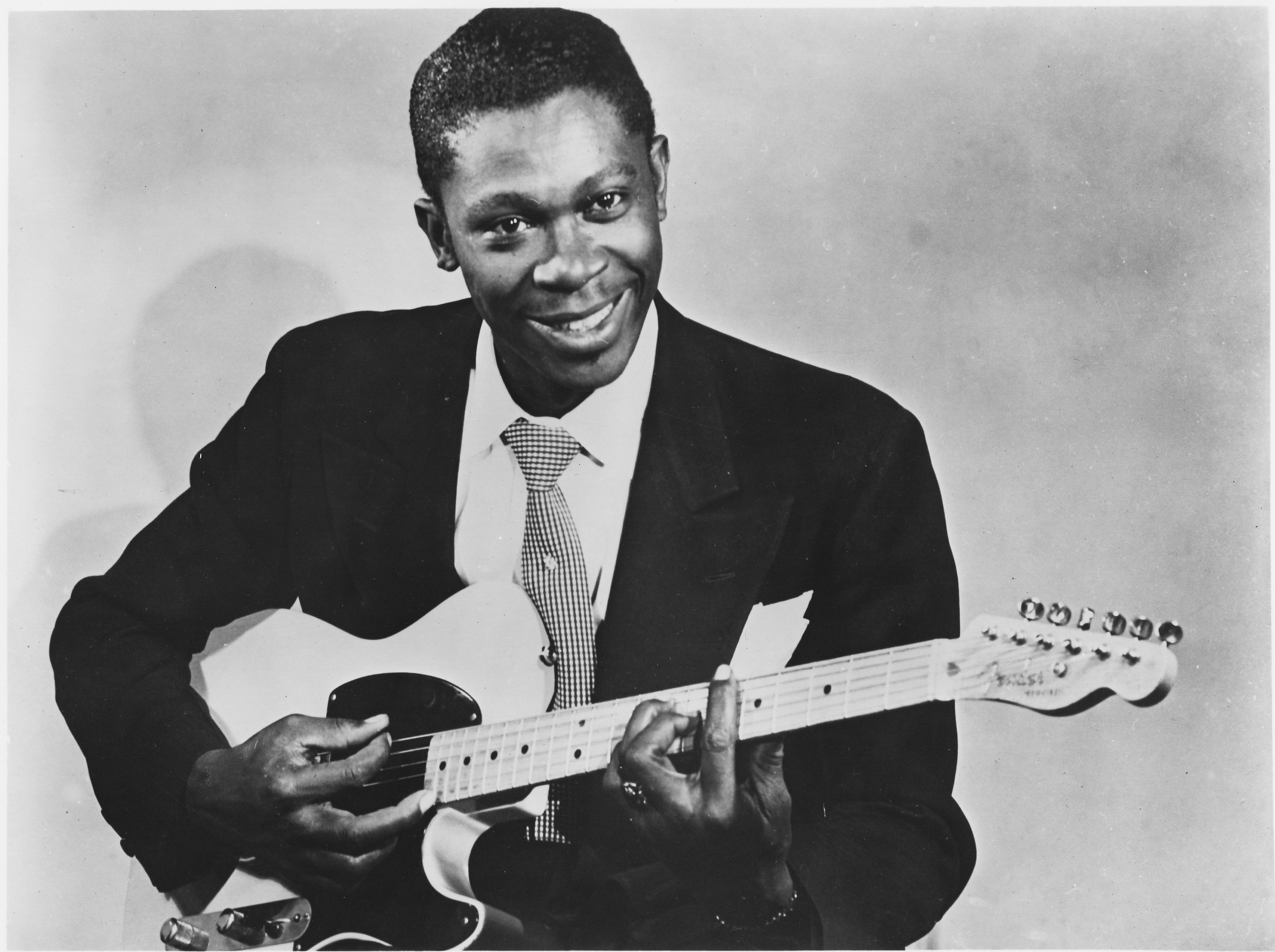
B.B. King played the guitar the same way that he sang: with feel, heart and passion in every single note. His control over dynamics, vibrato, touch and tone was second to none and he could captivate you with just a handful of well chosen notes. Often using the guitar as a second voice to respond to his vocals with, each and every one of his phrases is full to the brim with emotion and melodic purpose.
In the true spirit of The King, we focus on blending small portions of the major and minor pentatonic scales here and leave plenty of space between our phrases to really let the music speak. Dynamic playing is a must – whisper some notes and shout others, and get some fast finger vibrato going on any long held notes.

Grant Green

Grant Green really defines the jazz/blues genre. His playing is the perfect blend of both worlds and is an exciting and accessible place to start your journey if you’re looking to add jazzy flourishes to your 12 bar blues solos. His playing heavily features the minor pentatonic and blues scales, but he’ll throw in some super tasty bebop II-V licks along the way. The Charlie Parker of the electric guitar.
We open our example solo with one of Grant Green’s greatest tricks; G minor blues scale double stops. Make sure to keep your fourth finger anchored down on the root note. Let the double stops ring clear like a bell, with no muffled notes. Similar to the Wes example, you'll use the V chord (D7 is the V chord of G major) as our chance to jazz things up a little with an altered line featuring chromaticism and a #5 courtesy of a D augmented triad (D F# A#/Bb).
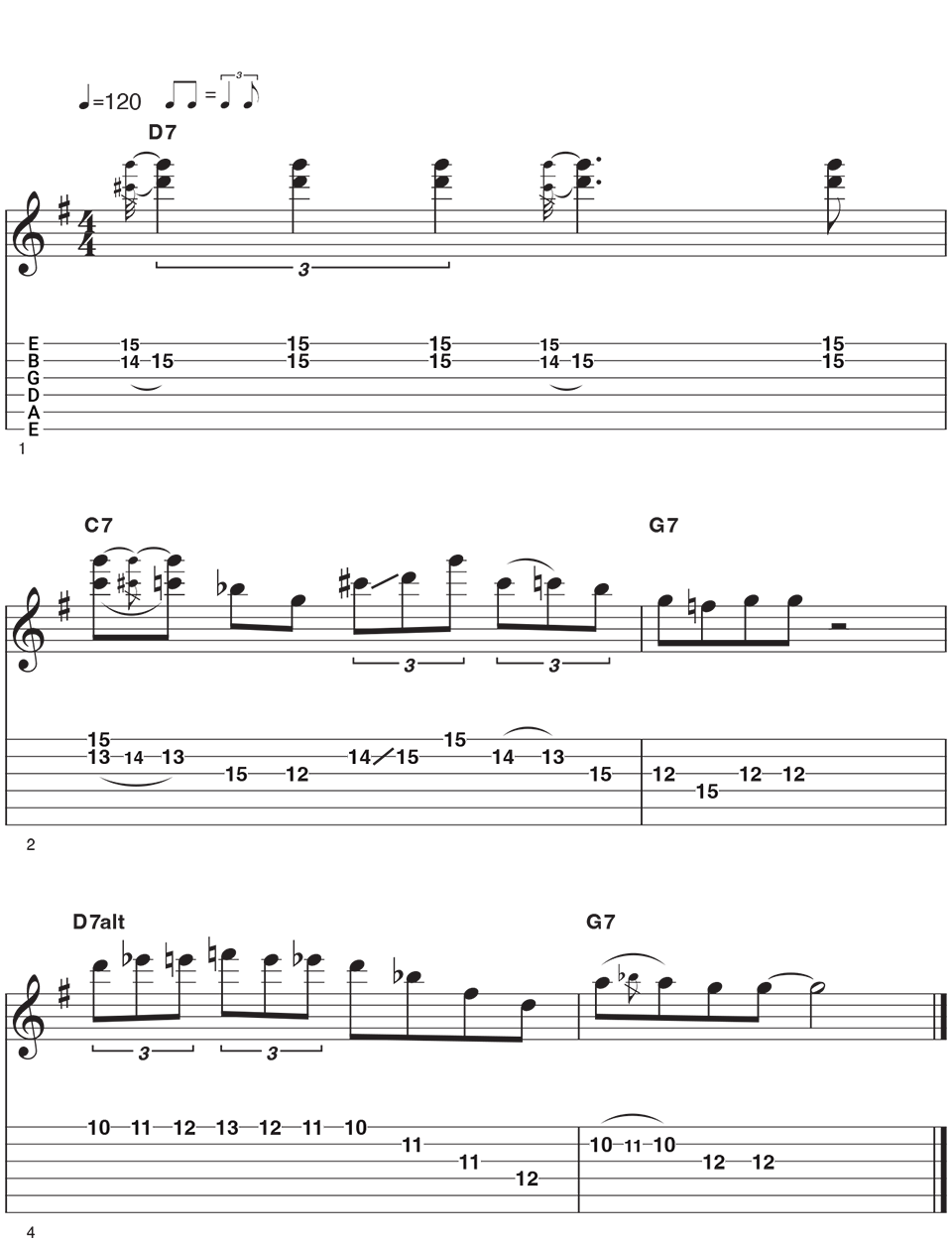
Wes Montgomery

For many fans, Wes Montgomery took the baton from Charlie Christian and ran with it! He brought a wealth of new, sophisticated bebop vocabulary to the blues and had the smoothest tone you’ll ever hear. The most advanced jazz improviser of his day, capable of the most complex altered lines, upper extensions, chord solos and tri-tone substitutions. But all that said, he never strayed too far from the origins of the blues. You can hear it in his fingers and his soulful expression.
If there’s one quick way to “Wes-ify” your playing, it’s with the use of blues scale octaves. Make sure you’re muting any unwanted notes in the fretting hand. You'll get a little fancy on the D7 chord at the end and play an altered lick, focusing on the #9, b9 and #5 extensions (these are popular exotic jazzy notes). Picking with your thumb like Wes is optional as we navigate the final few bars of a blues in G.

George Benson
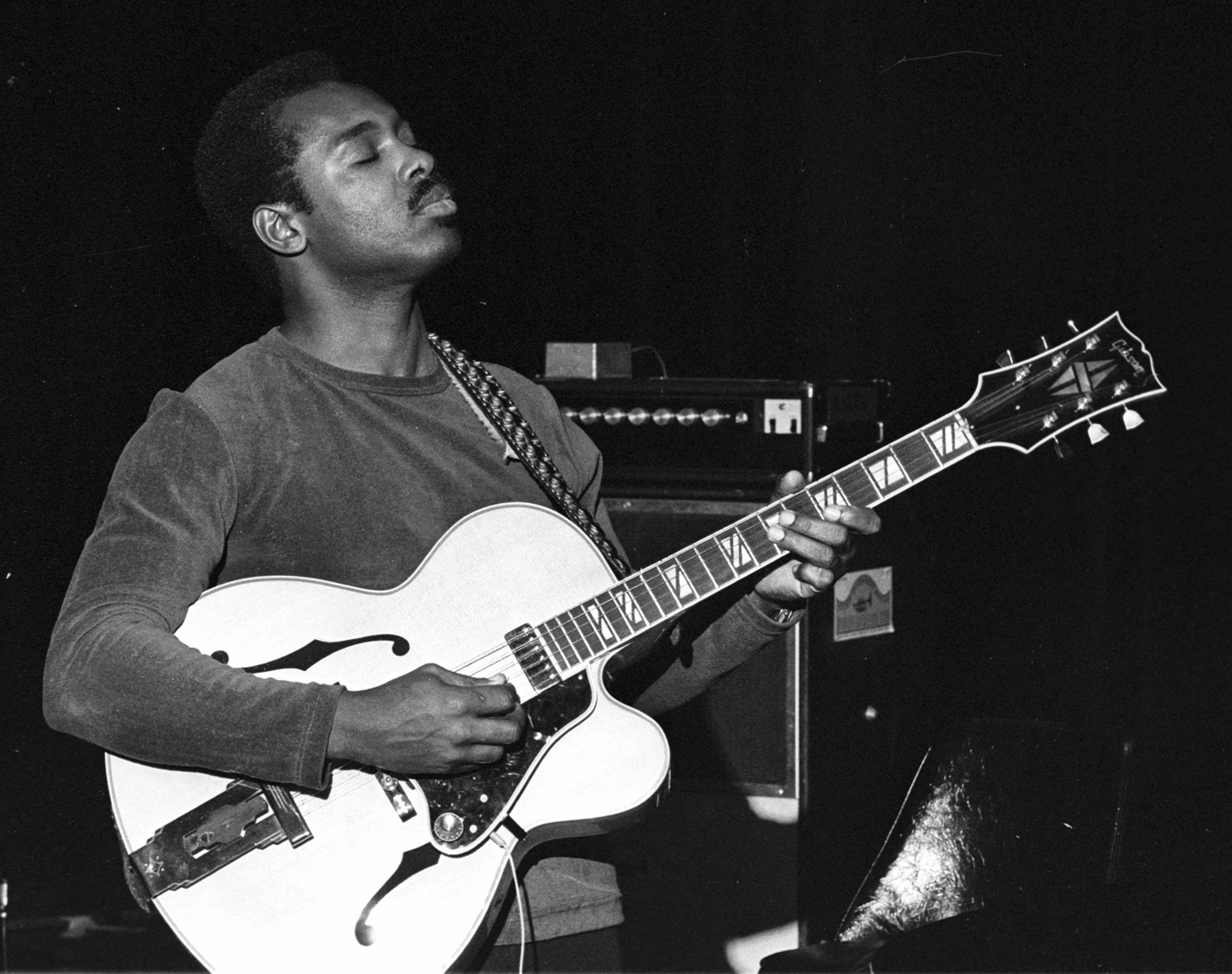
George Benson ushered in a new generation of blues inspired jazz guitar. A player with serious technical chops and an insane feel for groove and swing, with an ability to solo over the most complex of jazz chord progressions. As a fantastic songwriter and composer in his own right, he had a real pop sensibility which allowed him to craft melodic and truly memorable lines. George spoke highly of Charlie Christian and the influence he had on his own playing. I’m certain Charlie would’ve spoken equally highly of George if he’d had the pleasure of hearing him play.
This final example is also the jazziest. It starts with upper extension notes over the D7 chord courtesy of a Cmaj7 arpeggio (the notes of which are C E G B), before bringing things back down to earth with a G minor blues scale (G Bb C Db D F) line featuring a couple of quick hammer-ons and pull-offs to the b5 and back. It then switches to a major blues tonality targeting the 3rd and the 6th degree, a la Charlie Christian. You'll close with a couple of choice jazz chord voicings; a rootless D9, and a 3rd inversion (b7 is the lowest note, an F note) of G13.
